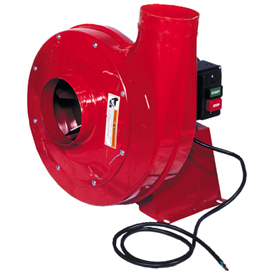I am MORE than willing to put my 55 gallon drum separator back together and use it for this test. I need data though.
My issue is this. My anemometer will only measure up to 69mph. so at the inlet of my DC, I cannot actually measure airflow, I exceed maximum measureable speed.
I have seen more than a few tests showing a Thien baffe, notably the top hat installs, but I assume others are similar, reduce airflow by somewhere around 45%.
I am wondering if the same is true with a baffle in the separator ring of the dust collector itself (post motor).
I can build and install the separator, however I have no means of measuring it if the air speed exceeds 69mph, which I expect it will / should.
What I am wondering, is has anyone done a comparison from pre, to post in ring baffle install, OR is there anyone in Houston Metro on here, that is interested in this data, that has an anemometer that can read much higher wind speeds than my puny one can that would be willing ot loan it to me or work with me to get this data?
I'd REALLY rather not buy another anemometer for this one data point. And I am pretty sure I will be able to get wind speeds at my duct ports with my existing one so no issues there...
My issue is this. My anemometer will only measure up to 69mph. so at the inlet of my DC, I cannot actually measure airflow, I exceed maximum measureable speed.
I have seen more than a few tests showing a Thien baffe, notably the top hat installs, but I assume others are similar, reduce airflow by somewhere around 45%.
I am wondering if the same is true with a baffle in the separator ring of the dust collector itself (post motor).
I can build and install the separator, however I have no means of measuring it if the air speed exceeds 69mph, which I expect it will / should.
What I am wondering, is has anyone done a comparison from pre, to post in ring baffle install, OR is there anyone in Houston Metro on here, that is interested in this data, that has an anemometer that can read much higher wind speeds than my puny one can that would be willing ot loan it to me or work with me to get this data?
I'd REALLY rather not buy another anemometer for this one data point. And I am pretty sure I will be able to get wind speeds at my duct ports with my existing one so no issues there...







